By Terry Miller
Plymouth School in Monrovia has implemented a first of its kind in the district – a dual immersion program for students to learn Mandarin. In fact the school is on the cusp of what will, perhaps, become a trend in all public schools in California with the general uptick in Asian-American population in Los Angeles County.

The program is taught by Mrs. Miki Boyle (Mandarin Teacher) and Mr. Steve Cook (Mandarin/English teacher.)
Dual immersion programs include native English-speaking students and native speakers of a foreign language. The goals of dual immersion programs are to develop bilingualism/biliteracy, academic achievement, and cross-cultural competencies for all students. Dr. Katheryn Lindholm-Leary, one of the country’s leading experts on dual immersion programs defines them said: “[In dual immersion programs] English-dominant and target-language-dominant students are purposefully integrated with the goals of developing bilingual skills, academic excellence, and positive cross-cultural and personal competency attitudes for both groups of students.”
In dual immersion programs, students learn content through both their native language and the target language. Simultaneous translation is never used. By the end of 5th grade, all students in the program are proficient in English, proficient in the target language, and at or above grade level academic benchmarks.
Plymouth’s principal, Suzanne Heck says they just jumped in feet first with the program and found exceptional support from not only the school board and teachers but particularly from the parents.
While there is no additional cost to parents, the families are encouraged to participate in monthly meetings and do so with great enthusiasm. Currently, 25 families are involved in these meetings.
Principal Heck notes that forty students are currently enrolled in the 50/50 model program at Plymouth. The students spend half the day learning Mandarin and the other half of the day learning Common Core principals as directed by the state of California.
A 50/50 model is where 50 percent of the day is in English and 50 percent is in Mandarin. 90/10 is where 90 percent is in Mandarin 10 percent is in English. The District’s Spanish program at Monroe works with this model. Spanish uses a “Romanized” alphabet which is easier to do with 90/10, according to Principla Heck.
Plymouth’s mission statement is: At Plymouth School the staff and school community are devoted to learning for all students. We are dedicated to developing the unique potential of each child in a safe, respectful and caring environment. We believe in challenging all students to gain an understanding of core academic standards. We believe that through creating and maintaining a learning environment that is nurturing, safe and focused, all students will be successful. In using a teamwork philosophy, our mission is to prepare students for their future; to be academically, socially and emotionally ready to grow and to become vital contributing citizens of a culturally diverse world.
And the Vision, according to principal Heck is:
1) Teachers will use consistent teaching elements to guide their instruction (SRI data, DIBELS Assessment, Close Reading Strategies, Kagan engagement strategies…)
2) All students in grades 2 – 5 will improve by 10% (or higher) on each ELA and Math District benchmark over the course of the school year.
3) All EL students will be given small group instruction for 45 minutes on a daily basis in ELA to develop grade level ELA skills.
4) Teachers will work to have all students gain developmentally appropriate social, emotional and academic skills through the use of procedures, modeling and practice.
5) Create diverse programs that expand students’ abilities to navigate the 21st century.
“Bilingual education has basically become a dirty word, but dual-language programs seem to have this cachet that people are glomming onto,” said Julie Sugarman of the Center for Applied Linguistics, a Washington, D.C.-based research organization. “They are successful for English-language learners. And white, middle-class parents want these programs to give their children an edge in the increasingly globalized world.”
Of the 40 students currently enrolled in the Mandarin Dual Immersion program, 45 percent are white; 30 percent are Chinese; 7.5 percent African American; 7.5 percent Filipino and the remaining 10 percent are listed as “other.”
“I feel privileged and honored that the school board and Plymouth Staff were so supportive of this program. With Plymouth’s location in the San Gabriel Valley, we knew that there was a need for a Mandarin Program in this area. The teaching staff is awesome and our dual Language parents are so supportive. I feel so fortunate to have this vision, turned into a reality,” Principal Suzanne Heck said.
